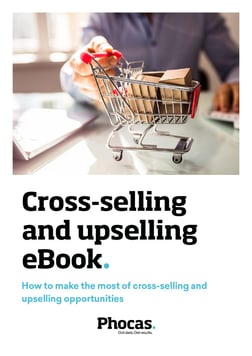Turn your customers into data advocates

A key benefit of data analytics is the ability to understand the needs of your customers. High performing companies share data with customers to better understand how both can grow.
The following scenario has played out many times during the past several years.
A sales representative for a manufacturer reviews his weekly dashboard and sales report on his smartphone prior to walking into a meeting with a customer. Prepared with a clear picture of his customer’s buying habits, inventory levels and pricing, as well as other data points, he proceeds to ask questions about the company’s sales goals, product needs and areas of opportunity.
Throughout the conversation, he reviews his dashboard to find answers to the customer’s questions, identifying complementary products and addressing any challenges. The sale rep’s recommendations are backed by months’ worth of sales information, allowing the customer to make data-based decisions that are good for both businesses. The customer is impressed with the level of detail provided by the sales rep and asks for regular reporting to assist in future transactions.
There are many things that we can learn from this real scenario, and the opportunities that it presents manufacturers, suppliers, distributors and other entities in the product supply chain. Operational and transactional data contains tremendous value. When the information is aggregated into a single source of truth and made accessible to decision makers, it can provide a variety of benefits to your business while turning your customers into data advocates. Sharing appropriate data points with your customers can have a significant impact on everything from loyalty to when, what and how much they buy.
Why share?
Among the biggest benefits of data analytics is the ability to understand the needs of your customers. Without an understanding of customer buying habits, such as when they are more likely to buy to which of your products they are most likely to carry, it can be difficult to grow the relationship and the revenue. From transactional sales data, you can identify trends and opportunities that can help your customers save time, improve efficiencies and potentially save money by moving more buying dollars to you.
As you review your data, consider the following questions?
- Could they improve the time products get to branches by drop-shipping?
- Are they always shipping to a central distribution center and then ship to branches?
- Could they combine orders to lower shipping costs?
- Could they order higher quantities in fewer orders to get better pricing?
- Could they centralize ordering to improve efficiencies and reduce redundancies?
- Are there complementary products they could order from you at equal to or lower prices than current suppliers?
- Do they frequently miss promotional opportunities?
Depending on your answers, the data you review daily or weekly can help your customers on a variety of levels. And there is a good chance that creating custom reports for your clients or sharing specific details from your Phocas dashboard will help answer their questions as well.
When you can help your customers reduce their costs, improve their operations and increase their opportunities for success, it will help to create a stronger customer relationship that can lead to reducing lost sales and increasing cross-sell and up-sell opportunities.
Through data analysis you may find that your customer is buying 20- and 40-watt LED bulbs, but not 60. This could be a major lost sales opportunity. As you drill down into your underlying data you can find opportunities lost by type of customer, type of product, sales region, or individual location, and identify what is preventing your customer from buying more products from you. With the data, you can create special promotions, and help your customers understand why it will benefit them to buy all three products through your company.
Cross-selling and upselling allows you to generate additional sales revenue by incentivizing existing customers to purchase items they may be buying from a competitor. While this helps your company financially, having a single source for a product line, can streamline a variety of processes for your customer, from accounting to inventory management.
Ultimately, as you share your actionable insights with your customers with the intent of helping them grow, you will drive a deeper level of customer loyalty that will also benefit your bottom line. They will value the data you collect to help validate business transactions and see you as a resource that is invested in their success.
To learn more about how analytics can help you optimize customer relationships, download this eBook, Make the most of your cross-selling and upselling opportunities

Empowering businesses with intuitive data analytics, driving informed decisions for growth and profitability. We make people feel good about data.

When to use an operating budget for more detailed planning
What is an operating budget? An operating budget is a resourceful tool that enables businesses to estimate income projections and expected expenses and plan for low-earning or high-spending months. This financial plan provides data that constantly records the costs of your business operations for a specific period (mainly up to the end of the year). It also serves as an outline detailing how much money a company spends and incurring expenses.
Read more
Improve planning with comprehensive sales forecasting
If the owner of your business wants to expand to a new State, would you have the sales forecasting figures to know whether the business can afford to do that or not? Or, if you had to produce a 3–year solvency projection for the CEO, is your sales forecasting process robust enough to support a reliable analysis?
Read more
Financial statement analysis: what's changing?
Financial statements are scorecards for businesses, allowing the finance team to interpret and analyze financial performance.
Read more
We'll do the data wrangling, you do the analyzing
In today’s business world, we are faced with the constant struggle to bring our data into line. The sheer volume of data that businesses generate can be overwhelming to simply manage, never mind analyze. A survey by Phocas revealed that 60% of businesses identified ‘no expertise in-house,' and 33% said, ‘too much data to unravel' as the main obstacles that prevent them from breaking down data silos.
Read more
Find out how our platform gives you the visibility you need to get more done.
Get your demo today